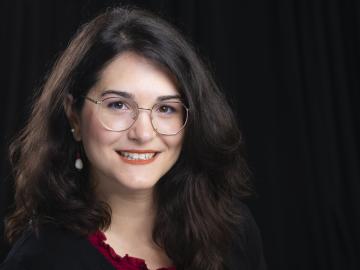Filter News
Area of Research
News Type
News Topics
- (-) 3-D Printing/Advanced Manufacturing (8)
- (-) Computer Science (4)
- (-) Frontier (1)
- (-) Fusion (1)
- (-) Grid (4)
- (-) Hydropower (1)
- (-) Materials (23)
- (-) Physics (1)
- (-) Quantum Science (2)
- Advanced Reactors (2)
- Artificial Intelligence (1)
- Bioenergy (9)
- Biology (7)
- Biomedical (1)
- Biotechnology (2)
- Buildings (6)
- Chemical Sciences (8)
- Climate Change (2)
- Composites (3)
- Coronavirus (1)
- Critical Materials (3)
- Decarbonization (5)
- Energy Storage (6)
- Environment (9)
- Exascale Computing (2)
- High-Performance Computing (5)
- Irradiation (2)
- Isotopes (3)
- Materials Science (4)
- Mercury (1)
- Microscopy (2)
- Nanotechnology (1)
- Neutron Science (8)
- Nuclear Energy (6)
- Partnerships (3)
- Polymers (2)
- Quantum Computing (3)
- Security (1)
- Simulation (5)
- Software (1)
- Sustainable Energy (7)
- Transportation (11)
Media Contacts

Jordan Hachtel, a research scientist at ORNL’s Center for Nanophase Materials, has been elected to the Board of Directors for the Microanalysis Society.

Three scientists from the Department of Energy’s Oak Ridge National Laboratory have been elected fellows of the American Association for the Advancement of Science, or AAAS.

Jingsong Huang, a staff scientist at ORNL’s Center for Nanophase Materials Sciences, has been selected as an associate editor of Frontiers in Soft Matter.

Anne Campbell, an R&D associate in ORNL’s Materials Science and Technology Division since 2016, has been selected as an associate editor of the Journal of Nuclear Materials.

Eva Zarkadoula, an R&D staff member at ORNL’s Center for Nanophase Materials Sciences, has been appointed to the early career editorial board of Nuclear Materials and Energy.

A partnership of ORNL, the Tennessee Department of Economic and Community Development, the Community Reuse Organization of East Tennessee and TVA that aims to attract nuclear energy-related firms to Oak Ridge has been recognized with a state and local economic development award from the Federal Laboratory Consortium.

Critical Materials Institute researchers at Oak Ridge National Laboratory and Arizona State University studied the mineral monazite, an important source of rare-earth elements, to enhance methods of recovering critical materials for energy, defense and manufacturing applications.

ORNL researchers have identified a mechanism in a 3D-printed alloy – termed “load shuffling” — that could enable the design of better-performing lightweight materials for vehicles.

